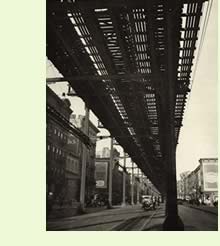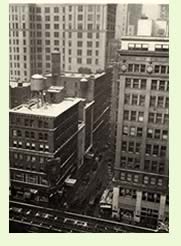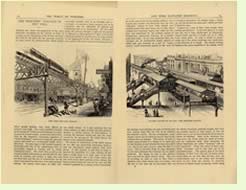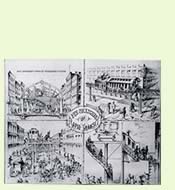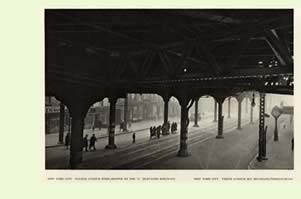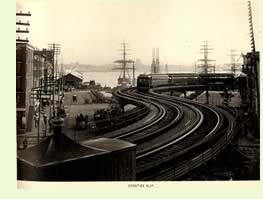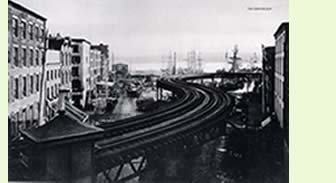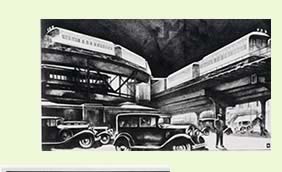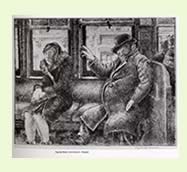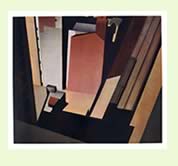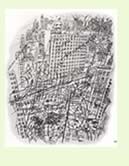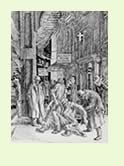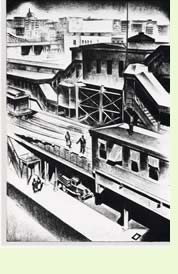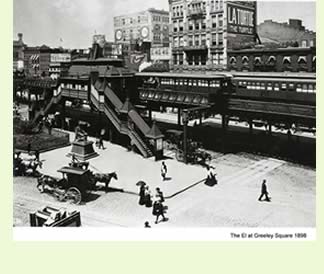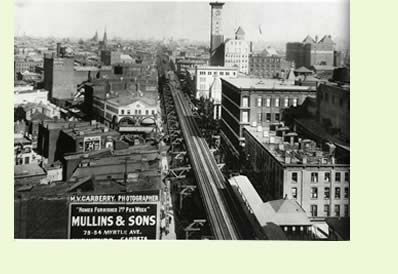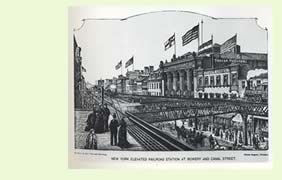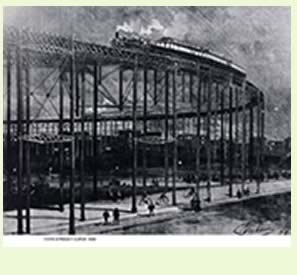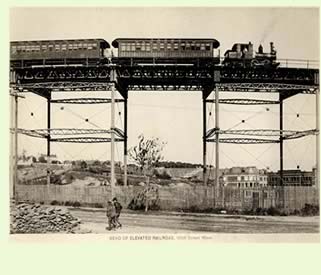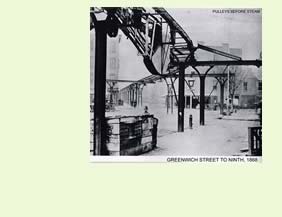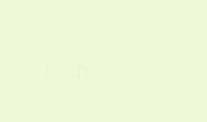 (3 galleries in the Public Domain) (3 galleries in the Public Domain)
It began to dawn on me how many artists had benefitted
from the spatial and formal possibilities of the Elevated Railway, primarily
in New York. I always meant to give a lecture on the theme, to include
the chase scene from The French Connection (shot I think in Chicago),
but I could not find a berth for the idea. The spectacle of the Underground
was fascinating, the plunging into the ground and the rapid transport
beneath, but here was travel in a space neither sky nor ground.
A short piece of fifties film
of travelling on the El was to be shown on the TV one lunchtime. I
sprinted home to video it, but had locked myself out. It can now be seen
on the Prelinger Archives -  Third
Ave.El, produced and directed by Carson Davidson, 1950. Third
Ave.El, produced and directed by Carson Davidson, 1950.
So here is the raw material. The first elevated railway
was a cranky matter of pulleys and cars. The cables snapped and the unfortunate
passengers had to descend regularly by ladders to the road. In 1870,
the system was launched where cars were drawn by steam engines, and
the first rapid transport option in New York became a successful reality.Steam
gave way to electricity c1901 and number of passengers grew until the
thirties when decreasing numbers and the attractions of
the certain property values without the structure in the streets , permitted
the destruction of the system which by the 1980's was reduced to vestigial
sections.
Top Row E.O.Hoppé, (ph.UK) two
photographs from Romantic America, Westermann NY 1927. Hoppé refers
to the continual noise of the rumbling of the El overhead. World of Wonders,
date unknown c1885, on the Railway. Several options available for the
Elevated Railways in New York.
Second Row, Hoppé, Under the El, he
notes a motley band of small foreign shopkeepers.Two photos c1898 of
the Coenties Slip track. What can a photograph tell you of time and occupation?
Third Row,Louis Lozowick Traffic litho
1930; Reginald Marsh print Second Avenue El; Charles
Sheeler painting Church Street El; George Grosz, Memories of New York
1917; Reginald Marsh, Shadowhounds, etching 1934.
Fourth Row, Louis Lozowick The Elevated
Railway 1931; Greeley Street El photograph; to the Bridge.
Fifth Row lower, the
pulley system, otherwise, the Railway against the sky.
Well it was a beginning. And I recommend a visit to the
Prelinger archive.
The film reinforces the pictorial attractions that drew
so many artists-
• the flickering patterns of the track shadow on the
buildings and people beneath;
• hovering in transit between ground and sky;
• the views of shops and traders beneath the tracks,
and axes of cheap houses and lodgings beyond;
• passing in the narrow spaces between buildings, never
to touch;
• the ornate stations with their stained glass and
pot-bellied stoves;
• the forest of wrought iron against the sky (day and
night);
• the severe grids of the pillars and supports springing
up from the streets;
• the position of the voyeur peering into windows at
heights above the first floor;
• the cluncky warm cars with slatted floors and vantage
points for kids;
• looking back down the cars as they snake their journey;
• looking out the window and seeing the train curling
to the right far ahead.
I hope the images above demonstrate the rich possibilties
in actuality before 1956, and in nostalgia, beyond.
It is possible to compare two different perspectives,
Charles Sheeler and Edward Hopper. The latter loved the views into offices
in the evening, as the workers made their preparations to leave.
There
are several European artists who took to the spectacle, Somewhere there
is a Nevinson print of the navigation of the city in this zone between
the Bus view and the Bomber view. |





